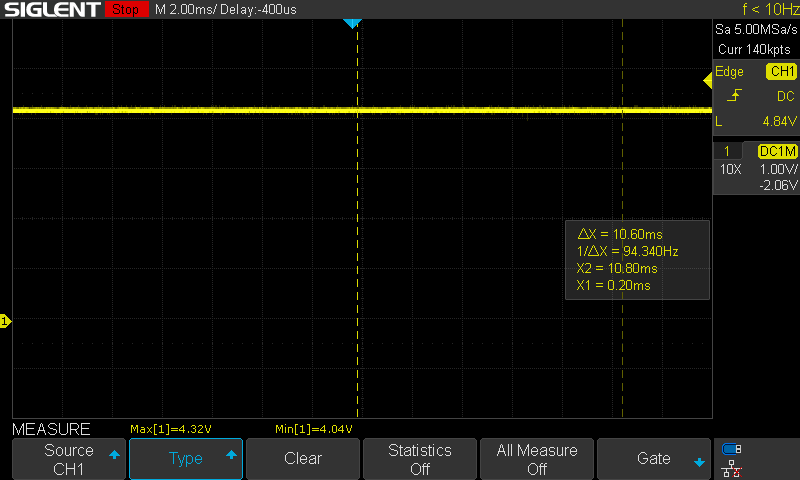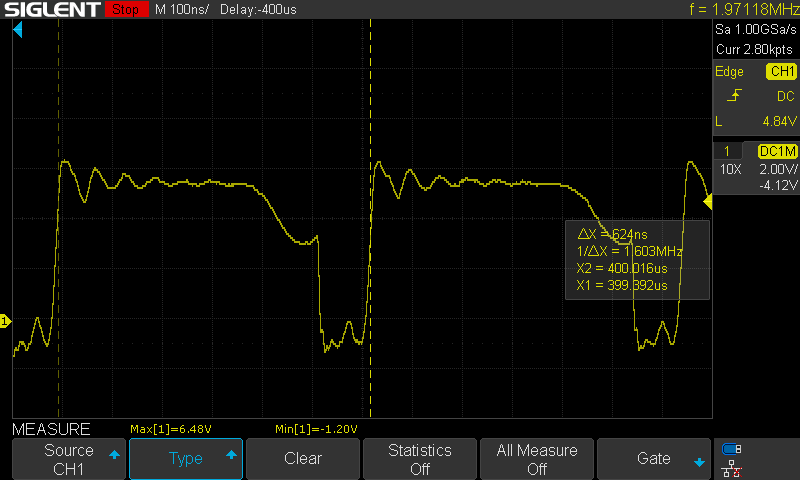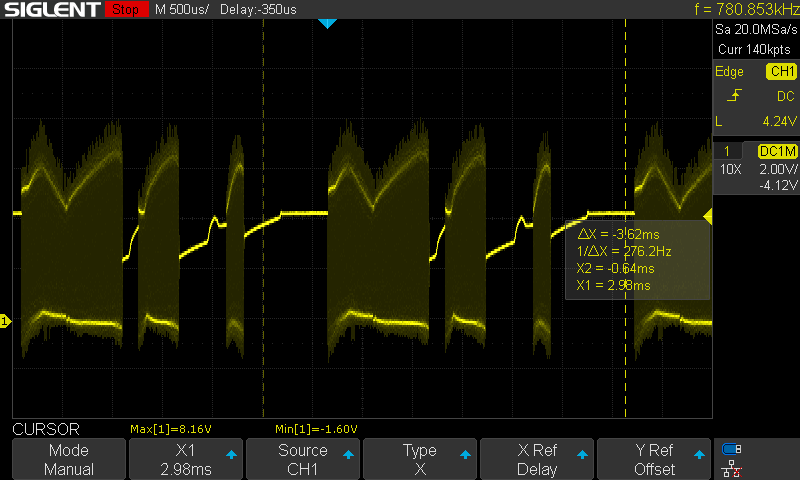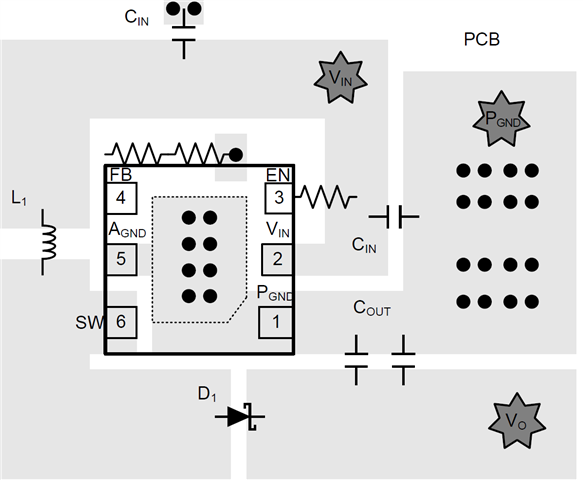Hello,
I have designed my own board for a battery-based application using the LM2735X (1.6 MHz). Vin = 3.7 V, Vout = 5 V, Imax = 1A. I am using a regulated voltage supply as input for the initial tests. The problem is that the output is only 5V once the input has reached 4.2 V. When applying lower input voltages, the current consumption increases significantly.
Please, find below an oscilloscope measurement of the Switching node

Do you have any thoughts on what could the issue be?
Thank you so much
Ignacio









